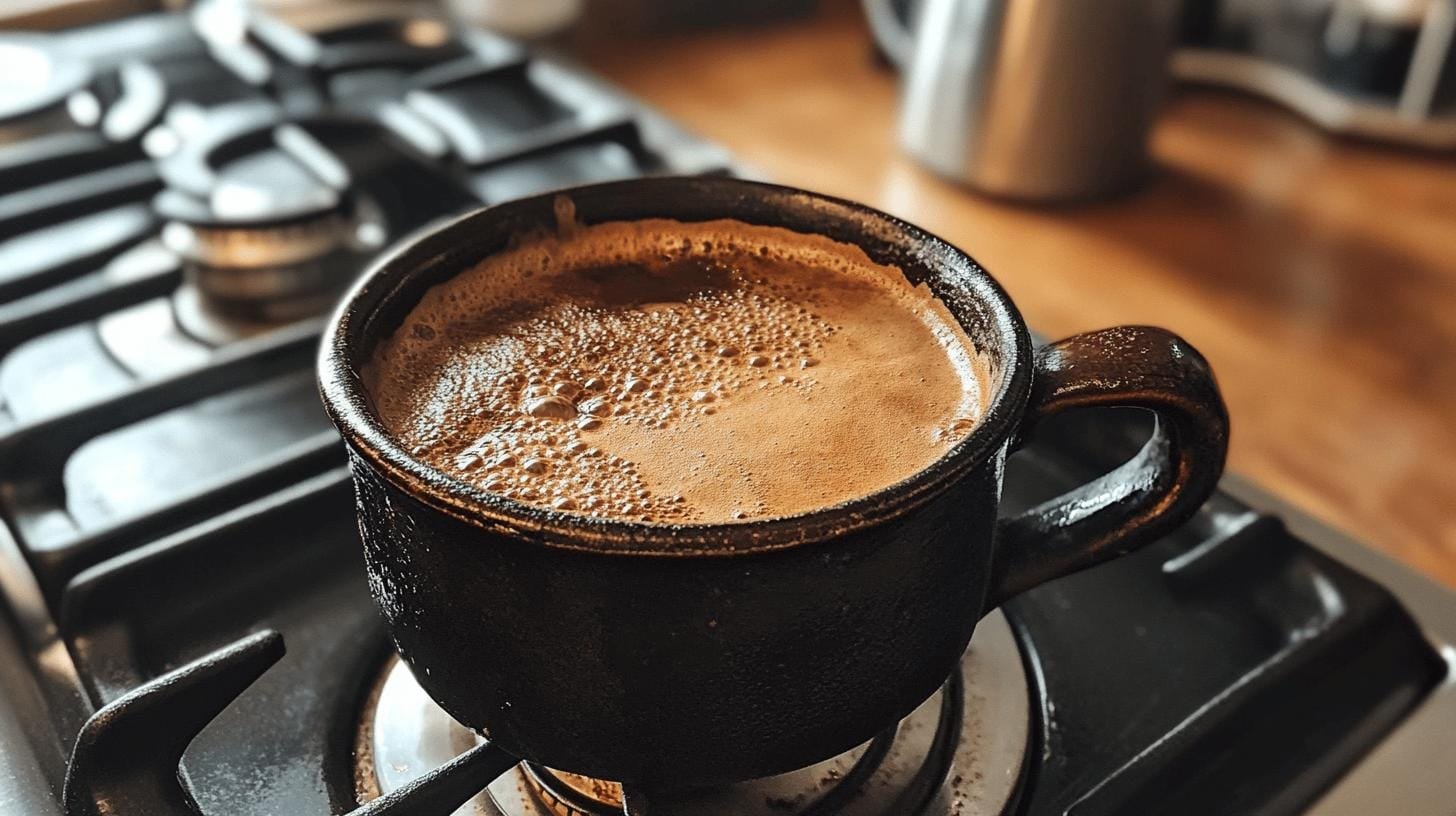
Artisanal Rituals for a Memorable Customer Experience
How can brands create a more balanced and memorable customer experience by blending artisanal product quality with thoughtful everyday rituals that keep people coming back?

Is authentic Turkish coffee just a taste or an experience? For those intrigued by mastering this traditional brew, knowing how to make Turkish coffee at home offers more than just a fragrant cup—it’s an exploration in cultural finesse and aromatic authenticity.
This guide navigates you through the intricate process of making Turkish coffee. From selecting the right ingredients to mastering the foam technique, you’ll discover the essence of this age-old beverage in your own kitchen. Let’s get straight into it.
To make authentic Turkish coffee, start with finely ground Turkish coffee and cold filtered water. Add sugar if you like. Typically, use 1.5 cups of water for each Turkish coffee cup for the right flavor balance. Essential tools include a cezve, the traditional pot for brewing, and Turkish coffee cups for serving.
For a better brewing experience, think about adding these optional tools:
Home-roasting your coffee beans can enhance your Turkish coffee. This gives more aroma and taste than commercial brands. Roasting at home lets you control freshness and roast level, ensuring rich and aromatic coffee. This fits with the traditional Turkish coffee style, where freshness is key.

Knowing how to make Turkish coffee at home is an art. It brings out the rich flavors and aromas of this traditional drink. Follow these steps to achieve the perfect cup:
Foam is vital in Turkish coffee, adding texture and distinct flavor. Creating thick foam takes patience and careful brewing. Home-roasted, fresh beans enhance aroma and flavor, adding to the traditional experience.
Stir coffee, water, and any sugar or spices well before heating. This ensures even mixing, crucial for foam development. As the cezve heats, watch foam movement and color closely. Spoon the foam into serving cups before boiling to keep its texture, adding richness to each cup. Keeping foam intact is key for authenticity.
To boost flavor, focus on ingredient freshness and quality. Home-roasted coffee beans give better taste, offering richness beyond commercial brands. Precision in measuring and careful heating are essential to mastering how to make Turkish coffee.
Turkish coffee has various recipe tweaks to enhance its traditional taste. A popular one is adding cardamom, which gives a spicy, aromatic touch to its robust flavor. Add a pinch of crushed cardamom pods to the cezve with coffee and water. Another tweak is mixing milk, making it creamier and milder. While less traditional, it’s great for those preferring smoothness.
Turkish coffee holds deep cultural significance in Türkiye. It’s a social centerpiece symbolizing hospitality and friendship. Serving Turkish coffee is a cherished tradition, often involving fortune-telling using the leftover grounds. This practice highlights its role in social bonding and storytelling.
Sweetness levels in Turkish coffee culture are defined by terms: “sade” (no sugar), “az şekerli” (little sugar), “orta” (medium sugar), and “şekerli” (sweet). This customization enhances the experience to suit individual tastes.
A small saucepan can work well as a substitute to Cezve. Make sure you are keeping the same coffee-to-water ratio and heating method. Heat the mix slowly over medium heat, looking for the characteristic foam. This approach keeps the traditional essence and rich flavor, even without a cezve.
A coffee maker can brew Turkish coffee. The texture may differ slightly due to missing foam, but the deep flavor is achievable. Use finely ground Turkish coffee and match the water volume to Turkish coffee standards to keep the brew strong.
Mastering how to make Turkish coffee involves understanding the balance of ingredients and tools, as well as familiarizing oneself with the intricate brewing process. From selecting the right coffee and water ratio to ensuring optimal foam, each step plays a critical role in achieving authentic flavor. With practice, anyone can discover how to make Turkish coffee that captures its true essence and allure.
Turkish coffee is made by mixing finely ground coffee, water, and sugar in a cezve, heating until foam forms, and then serving without straining the grounds.
A small saucepan can substitute for a cezve when making Turkish coffee, replicating the method of slowly heating the mixture and forming foam.
To make Turkish coffee with milk, replace water with milk, mix with coffee and sugar, heat gently, and serve with foam.
On an electric stove, the key is adjusting heat to medium-low to control foam creation without letting the coffee boil over.
Using a pan involves the same principle as a cezve: mix ingredients, heat gently, and serve when foam appears, avoiding boiling.

How can brands create a more balanced and memorable customer experience by blending artisanal product quality with thoughtful everyday rituals that keep people coming back?

Independent coffee shops have always been about more than caffeine—they’re hubs of creativity, connection, and care. As café culture continues to evolve, new trends are

Introduction Independent cafes win when they feel like the neighborhood’s living room and operate with the discipline of a great kitchen. Below is a quick

Discover how top specialty coffee brands create lasting loyalty through storytelling, sourcing, and community connection. Real tips from 6 industry experts.

Discover the ultimate showdown between two beloved coffee brewing methods: the French press and Chemex. Explore how each technique caters to distinct palates, with the French press delivering bold flavors and the Chemex presenting a bright, clean taste.

Unlock the secrets to brewing the perfect cup of coffee with our comprehensive guide on using a coffee scale. Discover how precise measurements enhance flavor and consistency while eliminating bitterness.

Discover how water temperature plays a vital role in brewing the perfect cup of coffee. This article delves into the ideal temperature range of 195°F to 205°F for optimal flavor extraction, enhancing the enjoyment of high-quality beans.

Discover the world of curated specialty coffee bundles, perfect for enthusiasts seeking quality and craftsmanship. This article explores the benefits of ethically sourced, small-batch beans from brands like Equipoise Coffee, offering diverse flavor profiles that elevate your brewing experience.

Discover the art of manual brewing to elevate your coffee experience! This article explores various techniques like pour-over, French press, and AeroPress, revealing how they enhance flavor and your connection to every cup.